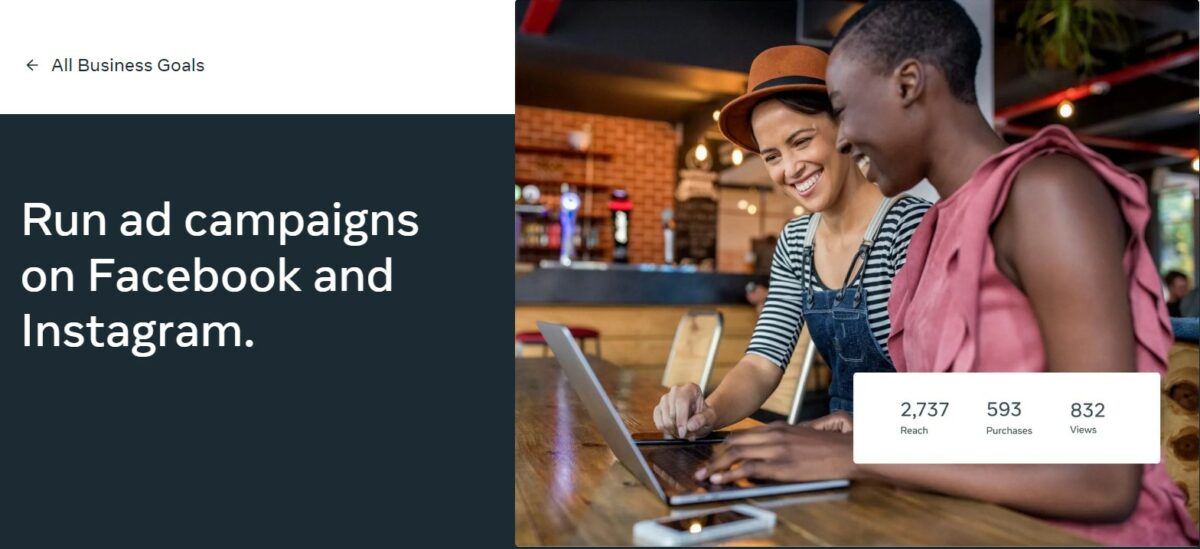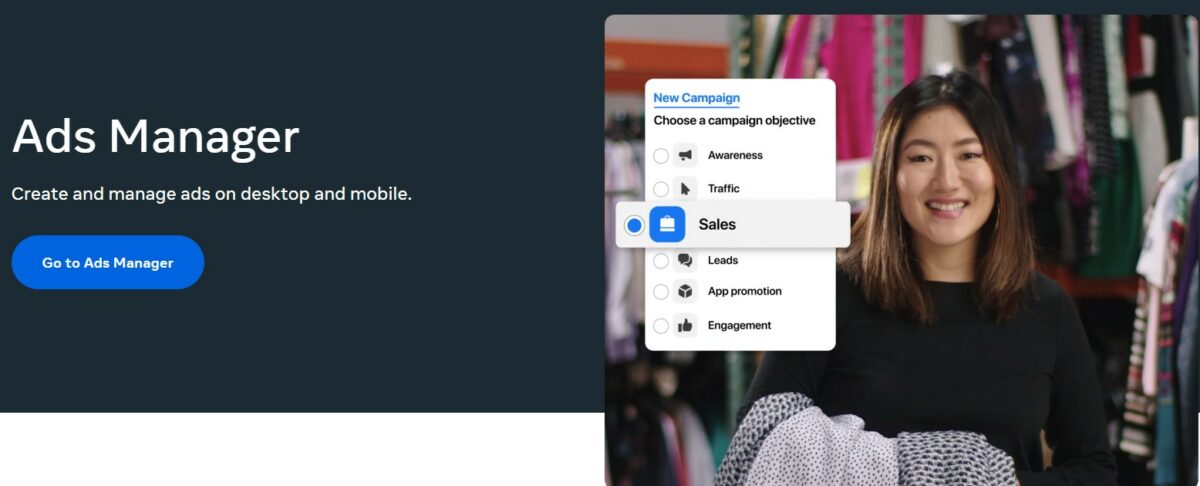Are you looking for ways on how to run Facebook ads?
With over 2.9 billion active users, Facebook is a great platform to reach potential customers.
Running Facebook ads can be a little confusing, especially if you’re new to the game.
But fear not, we’ve got you covered with this step-by-step guide on how to run Facebook ads.
When setting up a paid Facebook ad, there are a lot of boxes to check.
You need to make sure you’re targeting the right people, using the right bidding model, and running the right type of ad.
With so many options, it’s easy to get overwhelmed.
But don’t worry, we’ll walk you through the process and help you create effective ads that reach your target audience.
In this article, we’ll cover everything you need to know about running Facebook ads.
We’ll start by explaining what Facebook ads are and why they’re important for businesses.
Then, we’ll dive into the step-by-step process of setting up a Facebook ad campaign.
We’ll cover everything from choosing your objective to measuring your results.
By the end of this article, you’ll have all the knowledge you need to create successful Facebook ads for your business.
Post Contents
How to Run Facebook Ads

If you’re new to Facebook Ads, creating your first ad can seem overwhelming.
But don’t worry, it’s easier than you think.
In this section, we’ll walk you through the process step-by-step, so you can create your first Facebook ad with confidence.
Choosing an Objective
The first step in creating your Facebook ad is choosing an objective.
An objective is a goal you want to achieve with your ad, such as driving traffic to your website, increasing brand awareness, or generating leads.
Facebook offers a variety of objectives to choose from, so it’s important to select the one that aligns with your overall marketing goals.
Defining Your Audience
The next step is defining your audience.
Your audience is the group of people you want to reach with your ad.
Facebook allows you to target your audience based on a variety of factors, including age, gender, location, interests, and behaviors.
It’s important to define your audience carefully to ensure that your ad is shown to the right people.
Setting Your Budget
The final step is setting your budget.
Your budget is the amount of money you’re willing to spend on your ad.
Facebook offers two types of budgets: daily and lifetime.
A daily budget is the amount you’re willing to spend per day, while a lifetime budget is the total amount you’re willing to spend over the lifetime of your ad.
It’s important to set your budget carefully to ensure that you’re getting the most out of your ad spend.
Designing Effective Ad Content
When it comes to creating Facebook ads, the design and content of your ad are just as important as the targeting and bidding strategy.
In this section, we’ll cover some tips for designing effective ad content that will help you get the most out of your advertising budget.
Writing Compelling Ad Copy
Your ad copy should be concise, clear, and compelling.
Use language that speaks directly to your target audience and highlights the benefits of your product or service.
Here are some tips for writing effective ad copy:
- Keep it short and sweet: Facebook ads have limited space, so make every word count.
- Use action-oriented language: Encourage your audience to take action, whether it’s to visit your website, sign up for a free trial, or make a purchase.
- Highlight unique selling points: What sets your product or service apart from the competition? Make sure to highlight those unique selling points in your ad copy.
Choosing the Right Images
Images are a crucial part of your Facebook ad design.
They should be eye-catching, relevant, and high-quality.
Here are some tips for choosing the right images for your ads:
- Use high-quality images: Blurry or low-resolution images can make your ad look unprofessional.
- Choose images that are relevant to your product or service: Your images should help tell the story of your brand and showcase what you have to offer.
- Test different images: Try using different images to see what resonates best with your target audience.
Using Video in Your Ads
Video is becoming an increasingly popular format for Facebook ads, and for good reason.
Video ads can be highly engaging and help tell a more complete story about your brand.
Here are some tips for using video in your ads:
- Keep it short: Attention spans are short on social media, so keep your videos under 30 seconds if possible.
- Use captions: Many users watch videos on Facebook with the sound off, so make sure to include captions to help get your message across.
- Use storytelling: Use your video to tell a compelling story about your brand or product that will resonate with your target audience.
By following these tips for designing effective ad content, you’ll be well on your way to creating Facebook ads that get results.
Remember to test different ad formats and designs to see what works best for your brand and target audience.
Monitoring and Optimizing Your Ads

Once you’ve created and launched your Facebook ads, it’s important to monitor their performance and optimize them for better results.
Here are some ways to do that:
Using Facebook Ads Manager
Facebook Ads Manager is a powerful tool that allows you to monitor and manage your ads in one place.
You can view your ad metrics, adjust your ad targeting, and make changes to your ad creative.
Here are some things you can do with Facebook Ads Manager:
- View your ad metrics: Facebook Ads Manager provides detailed metrics on your ad performance, including impressions, clicks, and conversions. You can use this information to identify which ads are performing well and which ones need improvement.
- Adjust your ad targeting: If your ads aren’t reaching the right audience, you can adjust your targeting settings in Facebook Ads Manager. You can target specific demographics, interests, behaviors, and more.
- Make changes to your ad creative: If your ads aren’t getting the results you want, you can make changes to your ad creative in Facebook Ads Manager. You can try different images, headlines, and ad copy to see what works best.
Understanding Ad Metrics
To optimize your Facebook ads, it’s important to understand the metrics that Facebook provides.
Here are some key metrics to pay attention to:
- Impressions: The number of times your ad was shown to people.
- Clicks: The number of times people clicked on your ad.
- Click-through rate (CTR): The percentage of people who clicked on your ad after seeing it.
- Cost per click (CPC): The average cost of each click on your ad.
- Conversions: The number of times people took a desired action after clicking on your ad.
By monitoring these metrics, you can identify which ads are performing well and which ones need improvement.
You can then make changes to your ad targeting, creative, or bidding strategy to improve your results.
A/B Testing Your Ads
One of the best ways to optimize your Facebook ads is to conduct A/B testing.
A/B testing involves creating two versions of your ad and testing them against each other to see which one performs better.
Here are some things you can test:
- Ad creative: Try different images, headlines, and ad copy to see which ones get the best results.
- Ad targeting: Test different demographics, interests, and behaviors to see which ones are most responsive to your ads.
- Bidding strategy: Test different bidding strategies, such as cost per click (CPC) or cost per impression (CPM), to see which one gets the best results.
By conducting A/B testing, you can identify the elements of your ads that are most effective and optimize them for better results.
Key Takeaways
When it comes to running Facebook ads, there are several key takeaways to keep in mind.
Here are a few important points to remember:
- Define your objectives: Before you start creating your ad, it’s important to define your objectives.
- What do you want to achieve with your ad?
- Do you want to increase brand awareness, generate leads, or drive sales?
- Defining your objectives will help you create a more effective ad that resonates with your target audience.
- Target the right audience: One of the biggest advantages of Facebook ads is the ability to target specific audiences.
- Make sure you take advantage of this by targeting people who are most likely to be interested in your product or service.
- You can target based on demographics, interests, behaviors, and more.
- Create compelling ad content: Your ad content is what will grab people’s attention and convince them to take action.
- Make sure your ad is visually appealing and includes a clear call-to-action that tells people what you want them to do.
- Test and optimize your ads: Once your ad is live, it’s important to monitor its performance and make adjustments as needed.
- Use Facebook’s ad reporting tools to track your ad’s performance and identify areas where you can improve.
By keeping these key takeaways in mind, you can create effective Facebook ads that help you achieve your marketing objectives.






























